History and ArchaeologyAncient Troy had at least 9 layers or civilzations with perhaps some 80 settlements over the years. It was interesting to see examples of some of these layers. The oldest Troy, Troy I, dates from perhaps 3600 BC until about 2500 BE. The walls of Troy I are still in a good state of preservation. The city gate was 3 meters wide and was defended by two towers. Troy I was an early bronze age settlement. The settlement apparently came to and end by fire. Troy II (2500-2200 BC) represented a fairly highly developed culture, whose essential character was early Aegean and early Cycladic, as in Troy I. The potters of Troy II were conversant with the kiln and the potters wheel. The second walled city suffered some kind of catastrophe between 2200 and 2100 BCE. Troy III-V (2200-1800 BC.) During this period there was a gradual fading of the former glory of Troy and a decline in prosperity. During Troy IV there was not even a fortifying wall. In the time of Troy V the settlement seems to have been encircled by a minor wall. Troy VI (1800-1275 BC) represented one of the pinnacle cultural achievements of its age. It is probable that this is the famed city of Homer. Priam and his people may have lived in this period. The destruction of the city took place in the following phase, VII or it is possible that Troy VI was destroyed by an earthquake. Troy VII (1275-1000 BC) is considered by some to be the Troy of Homer. Troy VIII (1000-85 BC) represents a Hellenic community. No traces of this civilization go back further than the 7th century BC. In the Hellenistic period an important temple of Athena was built. Herodotus records that Xerxes sacrificed a thousand oxen to the goddess. Alexander, after his victory at the Granicus, visited the temple and gave gifts. Troy IX (85 BC-400 AD) is predominantly Roman in character. The Romans held the city to be an important one, believing that the Trojan hero Aeneas, spawned of Aphrodite (Venus), had founded the original Roman settlement. The Roman Emperors called the city'Novum Ilium' (the new Troy.) They built extensively here and many of their buidings are still partially visible.
|
 There are at least 9 different layers in the remains of of Troy, as found by archaeologists. This map and the key for the numbers on it are at thisWikipedia site.
There are at least 9 different layers in the remains of of Troy, as found by archaeologists. This map and the key for the numbers on it are at thisWikipedia site.
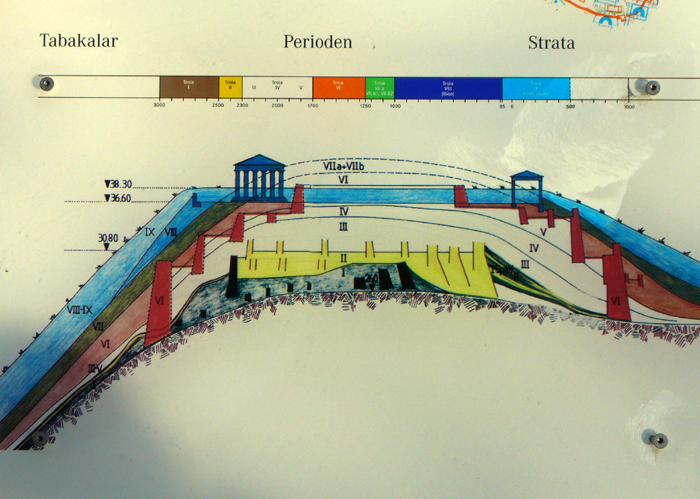 A cross section.
A cross section.
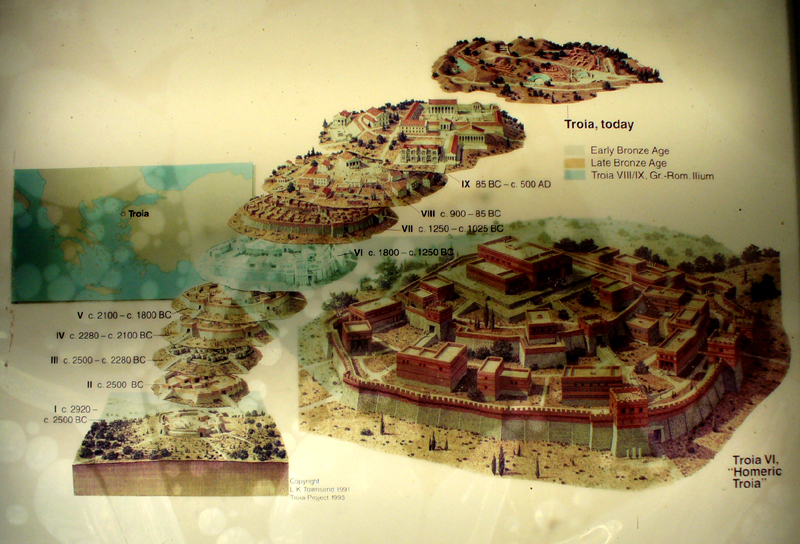 An artistic conception of the different layers at Troy.
An artistic conception of the different layers at Troy.
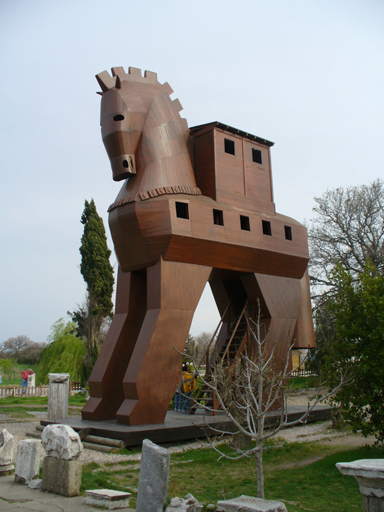 The Trojan horse for the benefit of the tourists.
The Trojan horse for the benefit of the tourists.
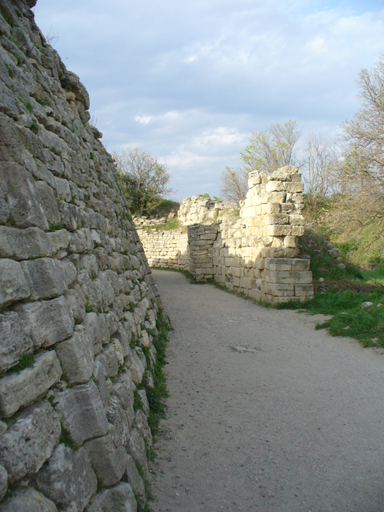 Here we are between two walls. The Greek wall on the left is from Troy VI, about 1700 BC, while the sandstone Roman wall on the right is from Troy VIII, about 100 BC.
Here we are between two walls. The Greek wall on the left is from Troy VI, about 1700 BC, while the sandstone Roman wall on the right is from Troy VIII, about 100 BC.
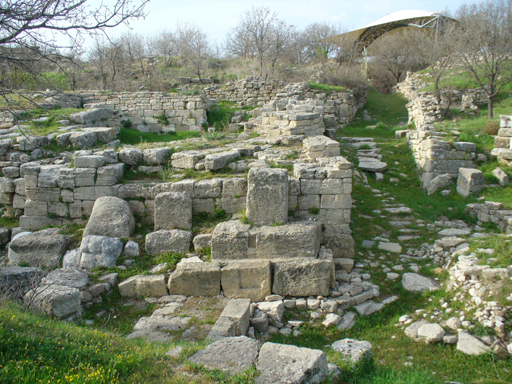 The South Gate of Troy VI.
The South Gate of Troy VI.
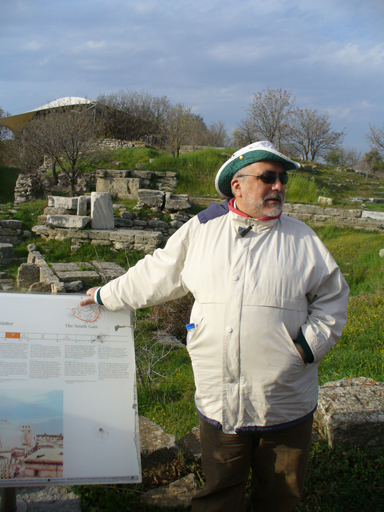 Our guide, Rashid, relating the story from the Iliad of the battle of Hector and Achilles at this gate.
Our guide, Rashid, relating the story from the Iliad of the battle of Hector and Achilles at this gate.
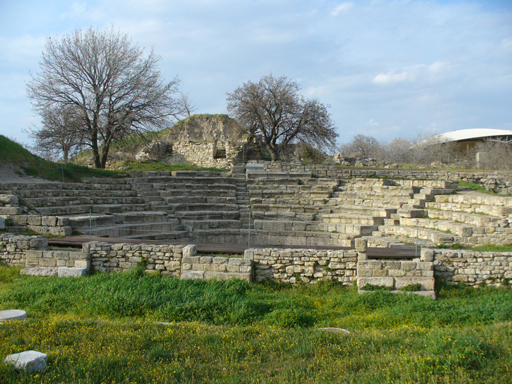 The Roman theater from Troy VIII.
The Roman theater from Troy VIII.
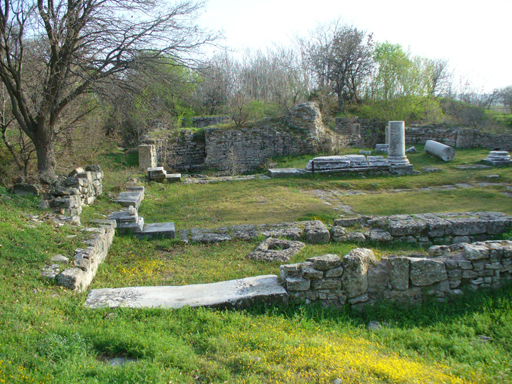 The remains of a Roman bath.
The remains of a Roman bath.
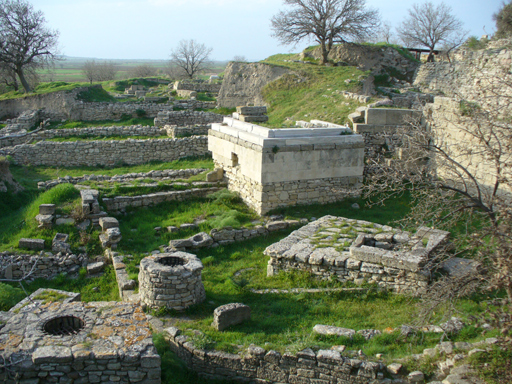 An altar for sacrifice to the gods.
An altar for sacrifice to the gods.
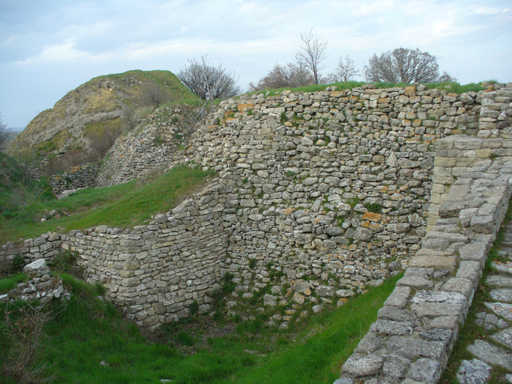 A Troy II Bronze Age wall.
A Troy II Bronze Age wall.
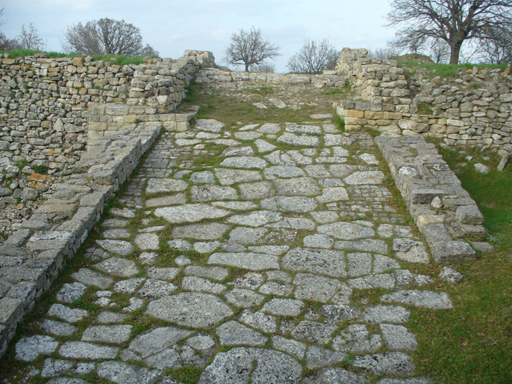 A ramp of the same period, leading to the wall.
A ramp of the same period, leading to the wall.
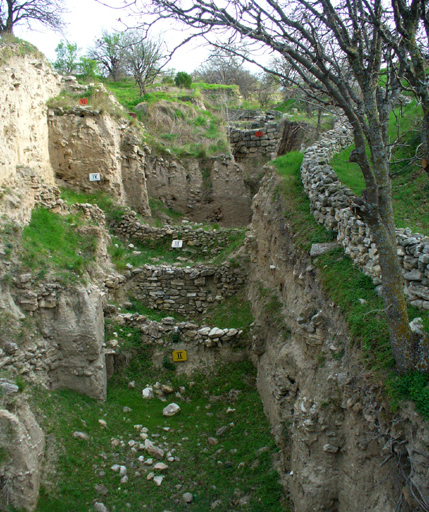 The archaeologist Schliemann followed an example he had seen at Naples and instead of digging down to a layer he wanted to study and preserve, he tried to look at different layers. So he dug trenches down through the layers. Here we see part of his trench, with the small colored signs indicating the level.
The archaeologist Schliemann followed an example he had seen at Naples and instead of digging down to a layer he wanted to study and preserve, he tried to look at different layers. So he dug trenches down through the layers. Here we see part of his trench, with the small colored signs indicating the level.
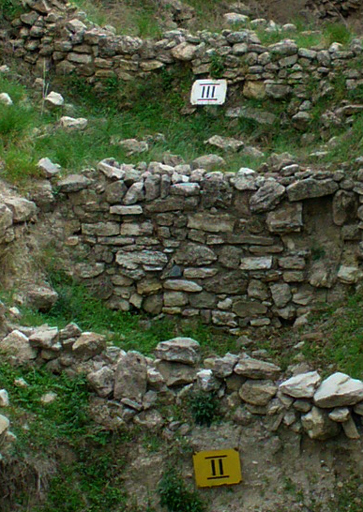 This closeup shows the Troy II and a Troy III levels.
This closeup shows the Troy II and a Troy III levels.
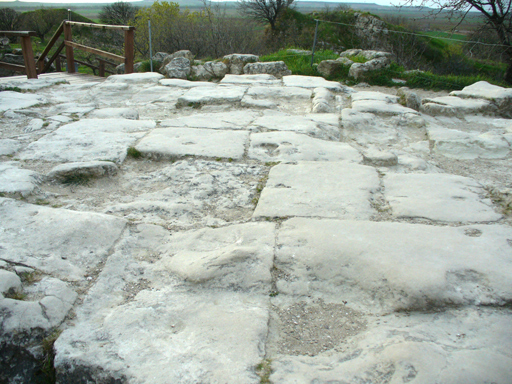 Part of the courtyard of the Temple of Athena, built about by the Greeks in 300 BC and restored in Roman times, probably by order of the Emperor Augustus (31 BC-14 AD.)
Part of the courtyard of the Temple of Athena, built about by the Greeks in 300 BC and restored in Roman times, probably by order of the Emperor Augustus (31 BC-14 AD.)
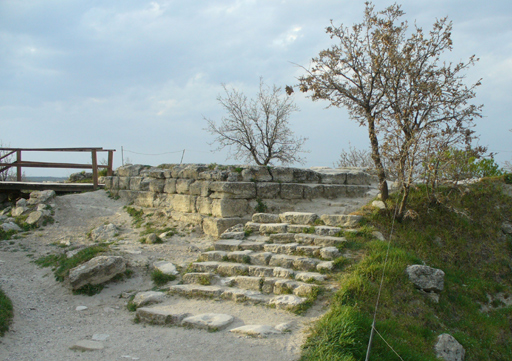 Steps up to the Temple of Athena. There is an entire website dedicated to this temple and its history.
Steps up to the Temple of Athena. There is an entire website dedicated to this temple and its history.
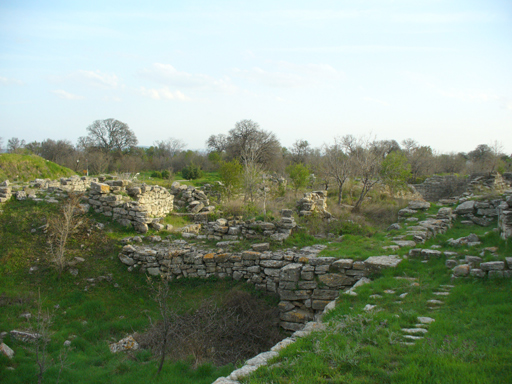 Remains of some trojan homes of Troy VI.
Remains of some trojan homes of Troy VI.
Our next stop is The Dardanelles.
